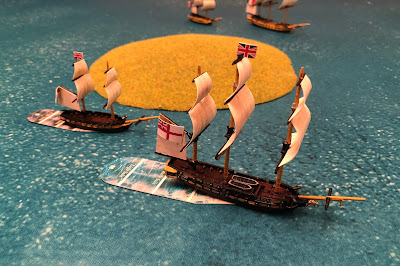2019 was another fruitful year for books, and I am pleased to see that sales of the printed word have increased this year. In particular, I want to thank the specialist military history press, Pen and Sword, Helion and Osprey, for their prolific output. Here is my pick of the year.
The Cretan War 1645-1671, isn't a conflict that many will recognise, but at the time it dominated the eastern Mediterranean. The focus was the siege of Candia (modern Heraklion) and drew in volunteers and mercenaries from across Europe. Bruno Mugnai provides not just a narrative history of the conflict, but also a detailed description of the armies backed up with colour plates. I visited Crete earlier this year, and this book was the essential companion, although the wargame figures are still awaiting a paintbrush.
Carole Divall’s biography of Sir Ralph Abercromby brought a less well-known commander of the French Revolutionary Wars into focus. The book is really a study of British involvement in this conflict, which is often overlooked by the larger scale Napoleonic wars that followed.
In The Great Illyrian War, Jason Abdale introduces the Illyrians and their conflict with Rome to the general reader. I had a few criticisms of the book's style, but it opens up a little-explored period of Balkan history.
Arras Counter Attack by Tim Saunders is the sort of detailed operational history, which is very difficult to write understandably. The Matilda tank is probably my favourite AFV of WW2 and next year's 80th anniversary of this battle will be an excuse to pick out another scenario from this book.
2019 was the last in the Game of Thrones TV series, which I thoroughly enjoyed and regularly wargame. David Weinczok has made a possibly too higher claim for Scotland being the context in his The History Behind Game of Thrones, but it's fantasy, so why not!
I often find aviation history hard to read, but Alexander Mladenov and pals have done a good job with their The Bulgarian Air Force in the Second World War. A bit obscure for most, perhaps, but I enjoyed it.
I had never even heard of the Trieste Crisis 1953 before picking up Bojan Dimitrijevic’s book. This is hardcore military history with comprehensive ORBATs and equipment schedules, as well as being profusely illustrated. This is a conflict I must try and get onto the tabletop.
Julie Peakman’s Hitler’s Island War, tells the story of the Leros campaign in WW2, mainly through the extensive use of letters, diaries and interviews, which make a very readable account of this botched British invasion.
Alexander Watson’s The Fortress is not a cheery read. He tells the story of the siege of Przemysl in 1914 where obsolete defences and elderly reservists held back the Russian steamroller on the eastern front, for a while at least. Pretty harrowing stuff, but well worth a read.
I haven't added significant numbers of Osprey books to my already vast collection this year. Mark Galeotti’s writings on modern warfare are always worth a read, and his Armies of Russia's War in Ukraine is particularly useful. I also enjoyed Kos and Leros 1943 by Anthony Rogers and Nicholas Sekunda’s The Army of Pyrrhus.
I should touch on the historical fiction I have enjoyed this year. A special mention goes to Matthew Harffy’s, Bernicia Chronicles, and I also enjoyed Griff Hosker’s Lord Edward’s Archer. Of course, no review of the year would be complete without the latest Bernard Cornwell book, Sword of Kings – magnificent as always.
Roll on 2020!

















































